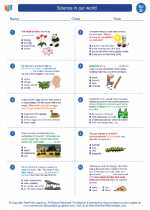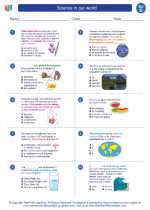Similarities in Science
Similarities are an important concept in science that help us compare and contrast different objects, organisms, or phenomena. By identifying similarities, we can categorize and understand the natural world more effectively. Here's a study guide to help you understand similarities in science:
What are similarities in science?
In science, similarities refer to the shared characteristics or features between two or more objects, organisms, or concepts. These similarities can help scientists classify, identify, and understand the relationships between different entities in the natural world.
Examples of similarities in science
There are numerous examples of similarities in science, such as:
- Structural similarities: Similarities in the physical structure or anatomy of organisms, such as the bones of different vertebrate species.
- Behavioral similarities: Similarities in the behaviors or actions exhibited by different organisms, such as migration patterns in birds.
- Chemical similarities: Similarities in the chemical composition or properties of substances, such as the similarities between certain elements in the periodic table.
- Geological similarities: Similarities in the formation or composition of geological features, such as similarities between different types of rocks.
Why are similarities important in science?
Similarities are important in science for several reasons:
- They help scientists identify patterns and relationships in nature.
- They allow for the classification and organization of diverse phenomena.
- They can provide insights into evolutionary relationships and common ancestry.
- They facilitate comparisons and contrasts between different entities, leading to a deeper understanding of the natural world.
Studying similarities in science
To study similarities in science effectively, consider the following tips:
- Utilize comparison charts or tables to visually identify and document similarities between different entities.
- Focus on both the overarching similarities and the nuanced differences between objects or organisms.
- Use classification systems, such as taxonomy in biology, to understand the hierarchical organization of similarities in the natural world.
- Engage in hands-on activities, such as comparative anatomy or chemical analysis, to directly observe and analyze similarities.
[Similarities] Related Worksheets and Study Guides:
.◂Science Worksheets and Study Guides Fourth Grade. Science in our world

 Worksheet/Answer key
Worksheet/Answer key
 Worksheet/Answer key
Worksheet/Answer key
 Worksheet/Answer key
Worksheet/Answer key
 Vocabulary/Answer key
Vocabulary/Answer key
